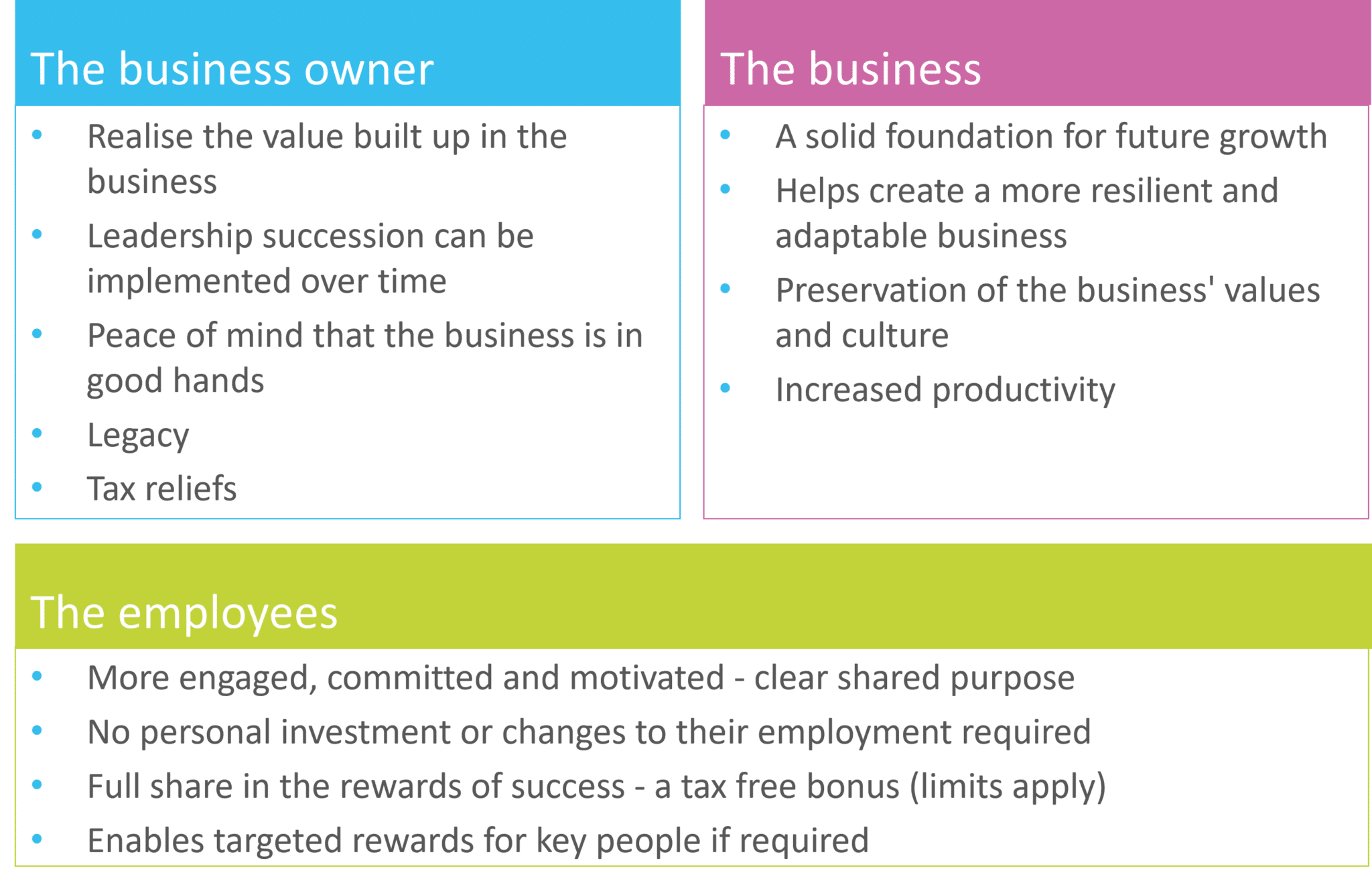We wrote this guest blog for A4G Chartered Accountants. It first appeared on their website here.
If you’re thinking about the various possible routes for business succession, have you considered employee ownership? Did you know that selling your company to an Employee Ownership Trust (EOT) will often be a viable choice that should be considered alongside a third-party sale, MBO or liquidation?
Employee ownership is one of the fastest growing business ownership models in the UK. It is increasingly being recognised as an attractive option for business owners seeking the best way to realise the value they have created in the business (with tax reliefs) and ensure continued long-term growth.
In the UK there are now over 1400 employee owned businesses and the numbers are increasing rapidly, with a 37% increase in the previous 12 month from 23rd June 2023.
What are the benefits of an EOT?
For a private company owner wishing to retire, an EOT is certainly worth considering. Importantly for many business owners, an EOT provides two tax breaks:
- Those selling their shares may do so free of capital gains tax
- Once a company is owned by an EOT, it can pay annual bonuses to its employees free of income tax
The principal conditions for these breaks are:
- The EOT must acquire and then hold more than 50% of the shares in the company
- If employees receive an income tax free bonus, they must all be included and on the same terms (the same applies if shares or cash is passed from the EOT to employees)
- The company must be a trading company (not an investment vehicle)
- The company must have a minimum number of employees compared with shareholders.
The EO model places the business in the hands of the people who already understand it, those who have a strong personal commitment to its long term success and are highly motivated by their ownership to want to continue to make it thrive.
A transfer to employee ownership enables a company’s founders to realise the value in their company in a way which keeps its independence and so is more likely to preserve what is best in its culture and values, offering them peace of mind that employees have the prospect of a positive future. This is often a strong driving force for retiring owners who acknowledge that much of their company’s success stems from the talents and commitment of their employees.
This model also has the potential to improve company performance, both financially and on any other measures. It is often felt that transferring to employee ownership can create a new energy and motivation (linking back to its impact on employees) that gives added momentum and improved productivity, innovation, initiative and ability to change.
The benefits of an EOT to:
How is an EOT funded?
Normally, an EOT will acquire a controlling interest in a company from its current shareholders.
Commonly, a price will be agreed (based on an independent assessment) which must not be more than market value and payment will then be made in instalments, the EOT being funded by the company from its future profits, usually after an initial down payment funded from current profits. Occasionally, a company owner will give their shares to the EOT but in most cases they will wish to be paid.
Who will manage the EOT?
An EOT will be run by its trustees. Their role will not be to manage the company (this continues to be the role of the management team) but to ensure the company is being well led and in a way which maximises employee engagement and commitment. This is sometimes facilitated by the creation of an employees’ council.
For more information on EOTs, watch our explainer EOT video here: https://youtu.be/MQBXKr-Z2Bw or visit our EOT page.

If employee ownership through an EOT is something you are interested in hearing more about and how it could possibly work for your company, please give us a call on 02038189420 or email info@postlethwaiteco.com.


